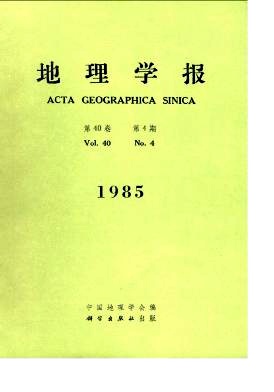Cai Renqun, Deng Yuyou, Zhong Ying
Shenzhen Special Economic Zone, which covers an area of 357.5 square kilometers with a population of 160,000(1983), is the earliest in its exploitation, the largest in size and the quickest in its economic development among the existing four special economie zones in China.1. Geographical locality is closely related to the development of the special econo-mic zone. The city’s adjacency to Xianggang (Hong Kong) its vast expance of land for construction, sufficient supply of power and water, rich farm produce and develop-ing transportation and communications, particularly its closeness to the oilfields under exploration at the mouth of the Zhu Jiang (Pearl Eiver) provide Shenchen Special Economic Zone with an extremely favourable geographical conditions its for its econo-mic development.2. Industry is the core of economy in the special economic zone. Consequently, to speed up imports of technology in industry is the key point in the construction of the zone. The priority of its industrial development should focus on that of household ele-ctronic industries so that they may coordinate with the rapid development of those in-dustries recently mushrooming in the Zhu Jiang Delta area nearby, forming the biggest centre of the household electronic industries in China. Meanwhile, industries such as building materials, foodstuffs, textiles, costumes, furnitures, fodders and processing in-dustry of daily necessities should also be appropriately developed. With the opening up of the oilfield at the mouth of the Zhu Jiang, there is a broad prospect for the develop-ment of petro-chemical works and the sea-oil service industry.3. Agriculture is an important component of the economy in the special economic-zone. However, so far as its foundation is concerned, it is still weak. From now on, the emphasis should be laid on the development of three main fields such as horticulture, poultry and products so as to build Shenzhen into a supply base of live and fresh farmproduce and non-staple food for the whole city and for Xianggang (Hong Kong) as well.4. Shenzhen has a coastal line as long as 248 km with several natural deep-weter bays, which have advantages for the development of sea transportation. Up to now Shekou port has already completed and Chiwan port is under construction. Judging from its geographical locality, natural conditions, communications with the inland and a comprehensive comparison of relationships between a port and a city, Mawan Bay Chiwan Bay is regarded to have better condition for a port, and is advisable to have it built first; the feasibility research on Yantian deep-water port in Dapeng Bay on the eastern coast will to be continuously conducted.5. Shenzhen is abundent in resources for tourism, which is a newly-developed business with bright prospect. Although the development of tourism requires imports of modern ficilities, the area for tourism in Shenzhen can never be developed into just a reproduction of a certain scenic spot abroad. In terms of housing, playing, eating, and shopping the Chinese styles and traditions and the strong local colors sliould be consistently maintained. Concerning all the quint essences in China, it is suggested to turn Shenzhen into a "shopwindow" and an "epitome" of China.6. To determine the size of the city development (including the population and the scale of the land to be used) is the essential prerequisite for city planning. The planned population in Shenzhen by 2000 is 800,000 and the land to be used is 110 square km. But there are still different views on the proposed plan. Judging from an ove-rall analysis of all the factors relating to the city’s geographical locality, its attraction of the inland, natural resources, land capacity and developing economic efficiency, convensent communications with foreign countries, water and power supplies, original economic foundation, source of population and its relationship with nearby cities, it is predicted that a population of 500,000 by 1997 is relatively reasonable. An increase of population up to 800,000-1,000,0
